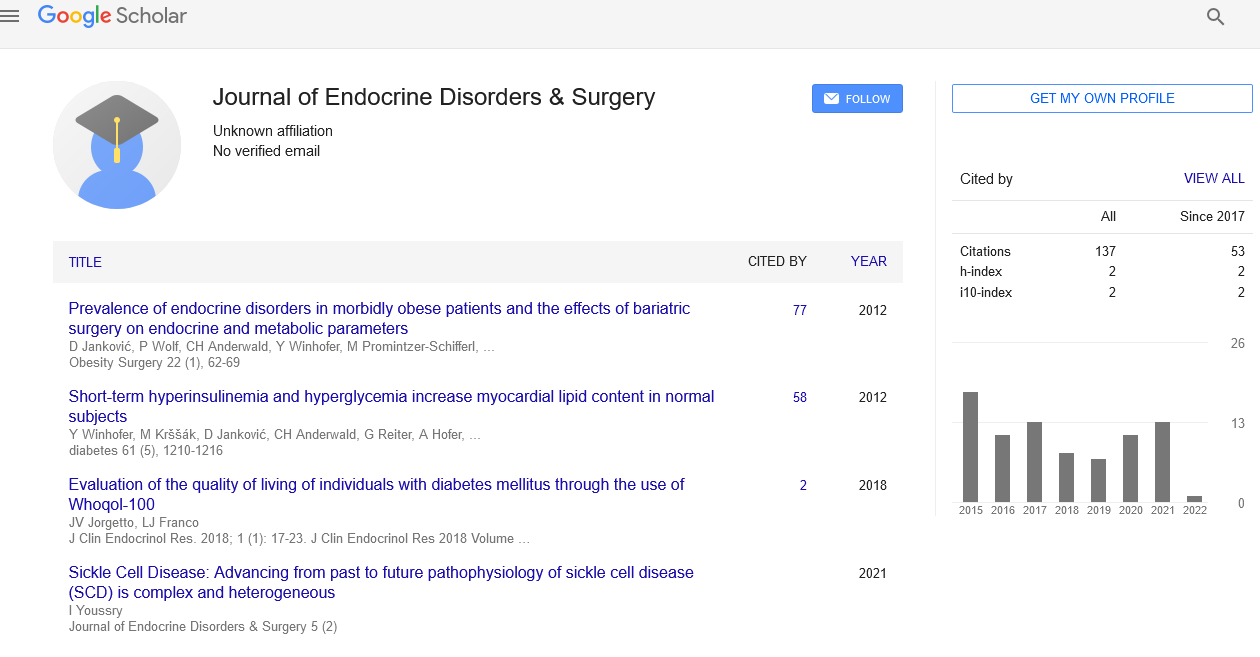
Sign up for email alert when new content gets added: Sign up
Abstract
An Overview on Gray Baby Syndrome
Author(s): Niranjan GudeThe gray baby syndrome is a kind of circulatory collapse that can arise in untimely and new born infants and is associated with excessively excessive serum tiers of chloramphenicol. It’s far characterised by using an ashen-gray color, abdominal distention, vomiting, flaccidity, cyanosis, circulatory fall apart, and loss of life. It commonly begins 2 to 9 days after remedy is started out. The syndrome is an end result of chloramphenicol impairing myocardial contractility by using at once interfering with myocardial tissue respiratory and oxidative phosphorylation. its miles believed to occur extra often in neonates because of their faded ability to conjugate chloramphenicol and to excrete the lively form in the urine. There have also been reviews in small youngsters and adults that have had accidental overdoses of the drug. The syndrome is commonly associated with serum ranges of chloramphenicol greater than 50â?¯mg/L and can arise with unexplained metabolic acidosis. To boost up drug elimination, exchange transfusion and charcoal hemoperfusion had been used [1]. Chloramphenicol is a bacteriostatic guy-made antibiotic that become discovered in 1947. First of all designed for the remedy of typhoid fever, it has fallen out of style due to the ubiquity of antibiotic-resistant Salmonella typhi. It became additionally historically used for the empiric remedy of pediatric sufferers imparting with petechial rash and fever for its brilliant coverage of meningococcal sepsis and rickettsial disorder. Due to its lowcost, wide spectrum of coverage, and low incidence of toxicity, chloramphenicol has been added to the World Health Organization’s List of Essential Medicines, and the growing problem of antimicrobial resistance to current broad-spectrum antibiotics has brought back interest in its use worldwide [2]. Twelve years after its discovery, the primary case record of a probably fatal negative reaction to chloramphenicol changed into discovered in neonates, with a predilection toward preterm infants. Neonates born at much less than 37 weeks gestation had been given chloramphenicol in an intravenous or oral components within two days of birth once they started to expand belly distention, vomiting, hypothermia, cyanosis, and cardiovascular instability. Vasomotor collapse resulting in mottling of skin and eventual ashen-gray skin discoloration led to the naming of this reaction as "gray-baby syndrome." The chloramphenicol-brought about gray baby syndrome is an instance of the capacity risks inherent in treating newborns based totally on dosing guidelines in adults. Chloramphenicol is detoxified within the liver mainly via conjugation with glucuronide. Due to its large spectrum of pastime, it become broadly used to treat a variety of infections inside the Fifties, which includes nursery infections in neonates. clinic-obtained bacterial infections within the new child nursery had been often because of much less touchy bacterial lines, compared to traces located outside the newborn nursery; therefore, untimely and full-term babies have been handled with adult doses scaled to the little one frame weight or with doses exceeding those encouraged in adults (1). inside the past due Nineteen Fifties case reports of unexplained deaths in newborns who have been receiving chloramphenicol seemed; these deaths and caused a managed medical trial of chloramphenicol therapy in untimely newborns who had been at excessive danger of infection because they have been born greater than 24 hours after spontaneous rupture of membranes. the same old of care for those newborns was empirical treatment with antibiotics, but newborns studied in this trial have been assigned to one in every of 4 companies: (1) no antibiotics, (2) procaine penicillin and streptomycin, (three) chloramphenicol, and (four) all 3 antibiotics Mortality become drastically better within the newborns receiving chloramphenicol, and almost two-thirds of the newborns receiving chloramphenicol died, compared to the <20% mortality charge in newborns who did not receive chloramphenicol. In infants weighing more than 2000 grams at start, 45% receiving chloramphenicol died in comparison with 25% inside the non-chloramphenicol-treated companies [3]. This high mortality price changed into ascribed to chloramphenicol toxicity the gray toddler syndrome refers to a feature constellation of bodily signs which includes vomiting, refusal to feed, respiration distress (irregular fast respiration), abdominal distention, intervals of cyanosis, passage of loose, inexperienced stools, flaccidity, ashen coloration, hypothermia, vascular fall apart, and death (commonly by using the 5th day of lifestyles) — that turned into diagnosed in the chloramphenicol-dealt with sufferers [4].




